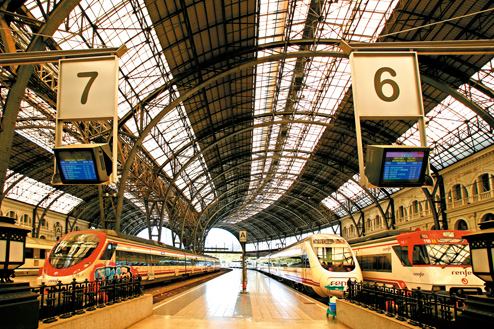Decline of the Empire
It was in the 14th Century that Barcelona’s economy began to falter. The rising naval power of the Ottoman empire left the city bankrupt in 1391. Meanwhile, neigbouring Castile was making astute alliances and growing rich on its wool and corn trade. Following the 1469 alliance with Aragon, Castile granted all overseas trade to Seville and Cadiz. Castile was entering its golden age, while Catalonia was in decline. In an effort to challenge Castilian dominance, in 1640, Catalonia signed the Pact of Ceret with the French. This made it a free republic under the protection of the French king, Louis XIII. In 1659, however, Barcelona was taken by Castilian troops under King John Joseph of Austria. Rosellò, Conflent, Vallespir and part of Cerdanya were annexed to the French.
During the Spanish War of Succession, Catalonia backed the wrong horse; supporting a British-Austrian alliance against the French Bourbon pretender, Felipe. The Austrian Habsburg claim duly dissolved, leaving Catalonia all on its own against Felipe. He triumphed and, installed as the Spanish king, in 1714, set about punishing a defenceless Barcelona.
Once he had sacked the city, Felipe outlawed the Catalan language (by now largely spoken only by the peasantry), declared Catalonia a province of Spain and built a huge fortress, the Cuitadella, to watch over it. Today it is the site of one of Barcelona’s loveliest green areas, el Parc de la Ciutadella.
By the end of the 18th century, Barcelona was leaving feudalism behind and its attentions were turned towards industry and trade with Spain and the ‘new world’ across the Atlantic. One of the world’s first textile-dyeing factories was inaugurated in 1783, and provided 75,000 jobs for Barcelonin workers.
During the Spanish War of Succession, Catalonia backed the wrong horse; supporting a British-Austrian alliance against the French Bourbon pretender, Felipe. The Austrian Habsburg claim duly dissolved, leaving Catalonia all on its own against Felipe. He triumphed and, installed as the Spanish king, in 1714, set about punishing a defenceless Barcelona.
Once he had sacked the city, Felipe outlawed the Catalan language (by now largely spoken only by the peasantry), declared Catalonia a province of Spain and built a huge fortress, the Cuitadella, to watch over it. Today it is the site of one of Barcelona’s loveliest green areas, el Parc de la Ciutadella.
By the end of the 18th century, Barcelona was leaving feudalism behind and its attentions were turned towards industry and trade with Spain and the ‘new world’ across the Atlantic. One of the world’s first textile-dyeing factories was inaugurated in 1783, and provided 75,000 jobs for Barcelonin workers.













